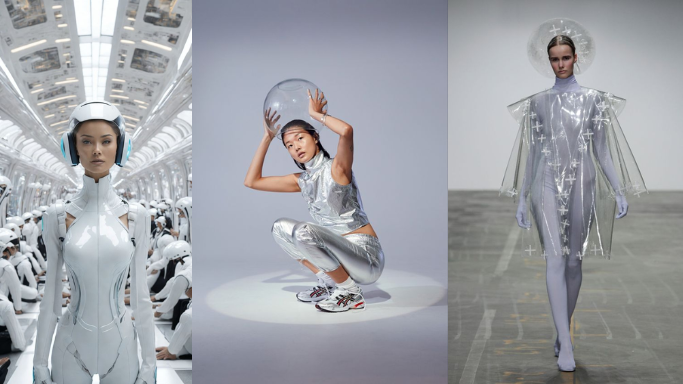Technology is fundamentally transforming the fashion industry, from how clothes are designed and produced to how they are marketed and sold. This integration of tech is driven by a desire for greater efficiency, sustainability, and a more personalized customer experience.
Key Areas of Technological Impact
1. Design and Production
- Artificial Intelligence (AI) and Generative Design: AI is revolutionizing the creative process.4 It can analyze vast amounts of data—from social media trends to sales figures—to predict what styles will be popular.5 Generative AI can even assist designers by creating unique patterns, color palettes, and garment ideas, significantly shortening the time from concept to market.
- 3D Printing: This technology allows for the creation of intricate, custom-made accessories, footwear, and even entire garments, often with minimal material waste. It’s a game-changer for on-demand and sustainable production, enabling designers to create and test virtual prototypes before any physical materials are used.
- Robotics and Automation: In manufacturing, robots are being used for tasks like fabric cutting, sewing, and quality inspection, leading to higher production rates, improved product quality, and cost efficiency.
- Digital Prototyping and 3D Modeling: Designers can now create and test virtual versions of garments using 3D modeling software, which dramatically reduces the need for physical samples. This not only saves time and resources but also significantly cuts down on textile waste.
2. Supply Chain and Operations
- Blockchain: Blockchain technology enhances transparency and traceability throughout the supply chain. By creating a secure and immutable record of a product’s journey from raw materials to the final garment, it helps combat counterfeiting and allows consumers to verify a brand’s claims of ethical sourcing and sustainability.
- Internet of Things (IoT) and RFID: IoT sensors and RFID tags are used to track items in real time, from the factory to the retail floor. This improves inventory management, reduces waste from overstocking, and ensures stores have the right products at the right time.
- Data-Driven Inventory Management: AI and machine learning are used to forecast demand with high accuracy, helping brands optimize inventory levels and avoid both overproduction and stockouts.
3. Retail and Customer Experience
- Augmented Reality (AR) and Virtual Reality (VR): AR and VR are reshaping the shopping experience. Virtual try-on apps and AR mirrors allow customers to see how clothes and makeup will look without physically trying them on, which helps reduce return rates. VR can be used to create immersive virtual stores and fashion shows, breaking down geographical barriers.
- Personalization: AI-powered recommendation engines analyze customer data to provide personalized styling suggestions and product recommendations. Digital stylists and chatbots offer tailored advice, making the online shopping experience more engaging and user-friendly.
- Virtual Fashion and the Metaverse: The metaverse is an emerging space for fashion, where brands create digital-only garments and accessories for avatars.22 These virtual items can be sold as NFTs, offering new revenue streams and opportunities for creative expression with zero environmental impact.
4. Innovative Materials and Wearables
- Smart Textiles: This is a growing field where technology is embedded directly into fabrics.24 Smart garments can monitor health data like heart rate and posture, change color based on temperature, or even adjust their insulation levels. This blurs the line between fashion and technology, particularly in sportswear and athleisure.
- Sustainable Materials: Technology is driving the development of new, eco-friendly materials, such as bio-based fabrics made from agricultural waste or lab-grown alternatives to leather. This aligns with a growing consumer demand for sustainable and ethical fashion.
The fusion of technology and fashion is creating a more efficient, responsive, and sustainable industry that is better equipped to meet the demands of modern consumers.

